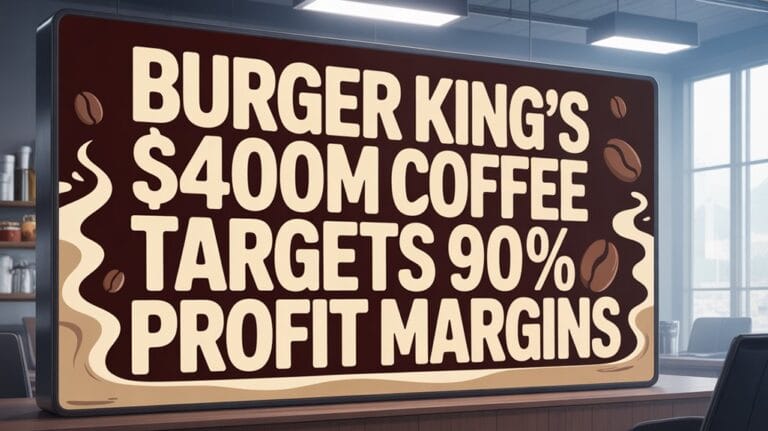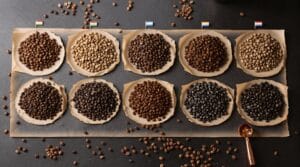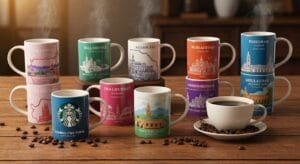Burger King launched a new cold foam iced coffee lineup in July 2025, marking a major shift toward specialty beverages as the chain works to compete with coffee giants like Starbucks and McDonald’s. The move represents the company’s attempt to capture more revenue through beverage innovation as it faces challenges in the competitive coffee market.
The new lineup features four flavor options: Vanilla, Mocha, Black, and a limited-release Plain version. Each drink starts with brewed iced coffee served over ice and topped with cold foam, a smooth aerated dairy topping that adds texture and creaminess. Prices start at approximately $2.99 but may vary by location. These drinks aim to create a multi-sensory experience that combines the unique appeal of coffee with the excitement of gourmet flavors, similar to how mocha sauce can lead to significant calorie consumption if not monitored.
Burger King’s new cold foam iced coffee lineup offers four flavors starting at $2.99, featuring creamy aerated dairy topping over brewed coffee.
This launch is part of Burger King’s broader “Reclaim the Flame” program, which involves a $400 million investment to innovate and revive the brand. The company aims to attract customers beyond traditional meal times by targeting non-meal dayparts with invigorating and energizing drink options.
The cold foam topping helps distinguish Burger King’s offerings from regular iced coffee and aligns the product closer to premium coffee experiences found in specialty shops. The Vanilla and Mocha versions combine brewed coffee with cream and flavored syrup for a sweet profile, while the Black Cold Foam offers a bold alternative without cream or flavoring. The Plain version includes cream only, providing a minimalist coffee experience.
Burger King also expanded its menu with two Real Juice Lemonades: Strawberry Lemonade and Mango Peach Lemonade. Both drinks use real fruit juices and purées for natural taste and vibrant appearance, targeting customers who want rejuvenating, fruit-forward beverages. The launch may increase foot traffic during non-meal hours, such as commutes and afternoon breaks.
The company’s pivot to cold coffee indicates an adaptive strategy responding to declining food revenue by leveraging the growing coffee segment. The beverages target coffee enthusiasts and younger demographics who value specialty coffee trends. The lower price point compared to premium coffee chains may increase accessibility and competitive positioning. Beverages offer significant profit potential with high drink margins that can reach up to 90%.
This introduction reflects a broader quick-service restaurant industry trend of investing in higher-margin drink sales to offset food revenue pressures and drive general traffic growth.





